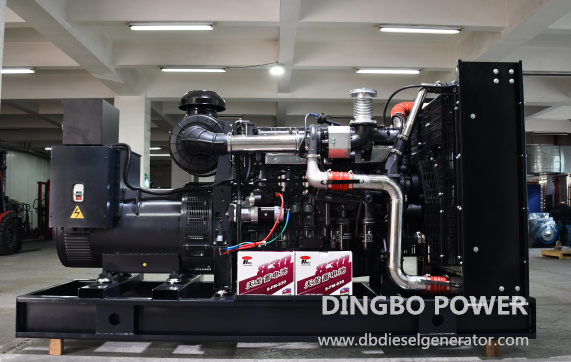Diesel generators produce electricity by burning diesel fuels. They convert mechanical energy into electrical energy. Cooling system is an essential part of a diesel generator, which can carry heat from diesel engine to keep its temperature within safe limits. Without the cooling system, the generator set will be damaged. In this article, let’s look at the diesel generator cooling system.
What is the cooling system in a diesel generator?
The cooling system is an important component of a diesel generator, as it helps to regulate the temperature of the engine and prevent overheating. Diesel generators burn duel in the engine during the combustion process to generate electricity, which produce an extraordinary amount of heat. If the heat is not controlled, it can cause wear and tear within the engine and damage to the interior components, ultimately shortening the lifespan of the generator.

The cooling system is designed to absorb heat from the engine and transfers it to a radiator or other heat exchanger, where it is dissipated into the surrounding air. Many modern engines are equipped with turbocharging systems to provide enough air to allow the burning of the fuel required to produce the required power. In addition to removing excess heat from the engine, the main functions of the cooling system also include maintaining the engine operating temperature where it works most efficiently and bringing the engine up to the right operating temperature as quickly as possible.
Generally, the diesel generator cooling system consists of liquid coolant, water pump, radiator (heat exchanger), inlet and outlet pipes and thermostat. Please note that engine manufacturers typically do not establish a cooling water specification, it’s recommended that the water should be slightly alkaline, specifically meaning a pH of 8 to 9.5. De-mineralized water is most frequently used.
How are diesel generators cooled?
Most diesel engines use a closed loop jacket type cooling system. Coolant flows through the engine absorbing heat from the cylinder liners, cylinder heads, and other engine components. The majority of diesel generators are air-cooled or liquid-cooled. The cooling method usually depends on the size and type of generator. Air cooling systems are usually implemented for smaller diesel generators, whereas larger generator sets call for liquid-cooled systems.
Air-cooled systems
Air-cooled systems make use of air circulation to cool the generator. There are two main methods of air cooling available: open-ventilated system and enclosed system. Open-ventilated systems use atmospheric air and the exhaust is then released back into the atmosphere. On the other hand, enclosed ventilation system keeps re-circulating the air to cool the internal generator parts. Air cooled systems have some limits including the risk of overheating. Typically, they are used for portable generators and standby generators up to 22 kilowatts.
Liquid-cooled systems
Liquid-cooled systems, also called water-cooled systems, utilize several types of oil or coolant to cool the internal generator parts. These systems include a radiator and water pump, with the pump distributing the liquid coolant to the engine block through hoses. The heat from the generator transfers naturally to the coolant, cooling the unit. Liquid-cooled systems are commonly used in modern generators above 22 kW and widely used for commercial and industrial purposes. Unlike air-cooled systems have a simple structure, liquid-cooling systems require additional design consideration and parts, including a radiator and other elements. They are more powerful and durable, the price is also higher.
How do you maintain a diesel generator cooling system?
As air-cooled systems have a relatively simple design, they typically demand less maintenance and are easier to maintain. Maintenance for liquid-cooled systems is more complex. To make sure the cooling system is in good condition, it’s important to perform regular maintenance. Check the cooling system before every use, and after every 50 to 100 hours of operation.
The coolant level should be between the minimum and maximum marks on the tank's fill line. You should check the coolant level regularly and top it up if needed. Remember to follow the manufacturer’s recommendations to test or replace the coolant periodically. Also inspect the radiator and hoses regularly for leaks and other damage and repair it immediately if any is found. Clean the cooling system regularly and make sure that the fan is clean, free of dust and debris, and spinning smoothly. Ensure that the radiator is free of dirt and corrosion, and not blocked by any objects.
If you are looking for a diesel generator but not sure which cooling system is right for you, feel free to contact Dingbo Power! We specialize in high quality diesel generator sets with more than 17 years’ experience and our experienced and knowledgeable experts can help you choose the right generator that fits your needs. Don’t hesitate to reach out for any further information or assistance regarding to diesel generator cooling systems. Contact us at dingbo@dieselgeneratortech.com, and we will gladly help you.
Comments
Post a Comment